- Home
- slideshows
- miscellaneous
- I've been using Microsoft's beautiful $4,200 Surface Studio 2 for weeks, and I want to keep using it forever - but I wouldn't recommend it for most people
I've been using Microsoft's beautiful $4,200 Surface Studio 2 for weeks, and I want to keep using it forever - but I wouldn't recommend it for most people
The Surface Studio 2's all-in-one design is ideal for home or office use.

As an all-in-one, the only cable you technically need for the Surface Studio 2 is the power cable. There's no need for an HDMI and power cable for a separate monitor.
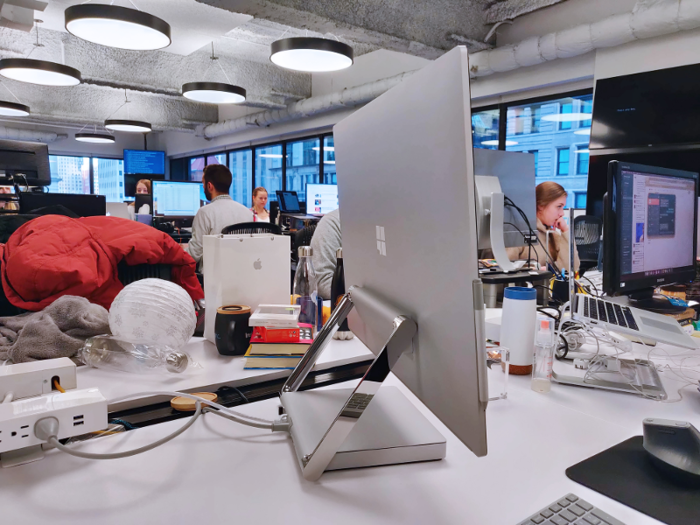
And as for peripherals and their respective cables, the Surface Studio 2 comes with a great, simple Bluetooth wireless mouse and keyboard. The only other cable I have connected to the Surface Studio 2 is an Ethernet cable, which makes for a neat setup compared to all the wires my colleagues need for their setups.
Along the back of the base, there's a headphone jack, an SD card reader, four USB 3.0 ports, one USB-C port that unfortunately doesn't support Thunderbolt 3, and one Gigabit Ethernet port.
The display is more square than traditional displays, which might not be for everyone.
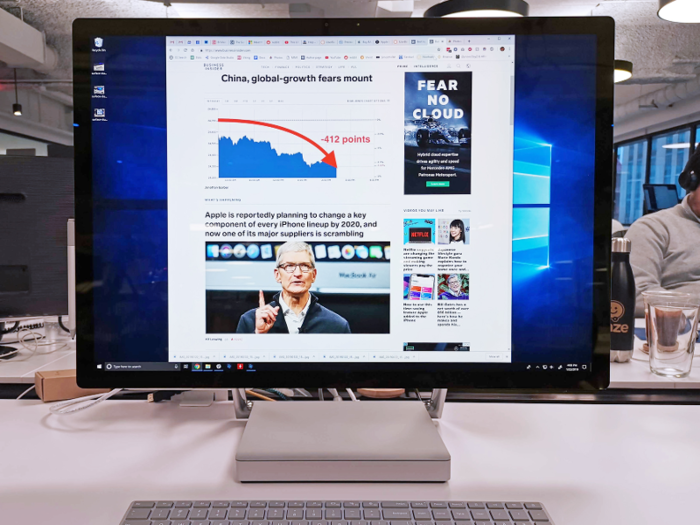
The Surface Studio 2's display has an odd 3:2 aspect ratio that's more square-like than traditional wide-screen 16:9 monitors. That odd, 3:2 aspect ratio favors height rather than width, which is actually great for a lot of apps. Just consider that content in most apps, like a web browser for example, mostly scrolls vertically. Indeed, I could see a lot more "internet" in my web browser with the Surface Studio 2's 3:2 display than I typically can with a normal 16:9 monitor.
At the same time, the Surface Studio 2's display also felt cramped for my workload once I started needing three or more open windows. It's much easier to fit all my windows on a wider 16:9 display than the Surface Studio 2's 3:2 display.
Still, at a 3000 x 2000 resolution, the Surface Studio 2's display is sharp and makes everything it displays look beautifully crisp.
Unfortunately, the Surface Studio 2 is over-powered and too expensive for most computer users.
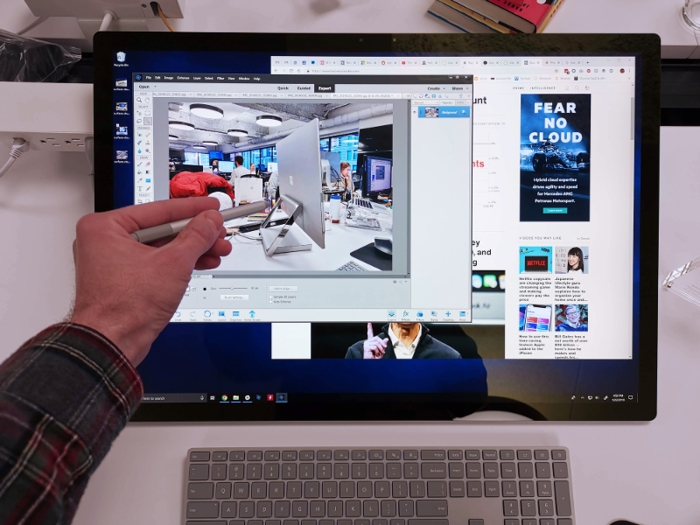
If you couldn't already tell from its price tag, the Surface Studio 2 is too expensive and powerful for most regular computer users. Yes, I get it, it's beautiful, and its all-in-one design is compact. But if you use computers to browse the web, write emails and documents, watch YouTube videos, or even do some more power-hungry tasks like light photo editing, you don't need the Surface Studio 2.
With a Core i7 processor, between 16 and 32 GB of RAM, and powerful graphics cards ranging from the Nvidia GTX 1060 to the GTX 1070, this machine is priced and specced more towards professionals who need powerful PCs for their work, like photo and video editing, and anything else that needs a lot of processing power.
However, one thing that caught my eye about the Surface Studio 2 is that, despite its desktop design, it's actually running on a mobile processor from Intel — the 7th-generation Intel Core i7 7820HQ.
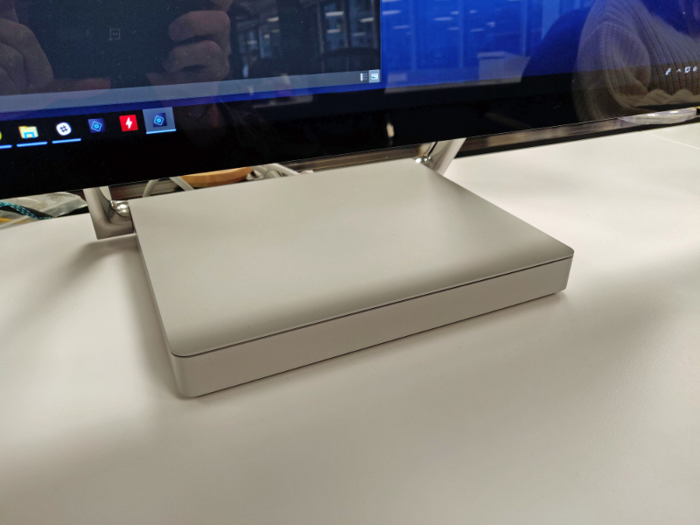
At the end of the day, that means the Surface Studio 2 has the performance of a laptop — albeit, a very high-end and powerful laptop. But it's still not as powerful as full desktop chips in Intel's 7th, 8th, or 9th-generation Core i7 lineup. With that in mind, it might not satiate certain professionals who demand desktop-level performance from full desktop chips rather than laptop chips.
I suspect that the Surface Studio's base, where the processor resides, is too sleek and compact to properly cool a full-size desktop chip. Had the Surface Studio been given a larger base, it might have been able to support a full-size desktop chip's heat. But then again, a larger base would compromise the Surface Studio 2's sleek and compact design.
To be fair, the Surface Studio 2 and its laptop chip will deliver enough power for many professionals and their workloads. It's just that professionals can get a computer with a newer and more powerful full desktop chip, including a graphics card, monitor, mouse, and keyboard, for about the same price, or even less than the Surface Studio 2.
PC gamers might look at the Surface Studio 2's specs and think it's suited for high-end gaming, but the Surface Studio alone isn't really designed for that, either. I tried playing some games on the Surface Studio 2, and while games ran fine, the odd 3:2 display is too square for a gaming experience, which is designed for wider screens.
Gamers can attach their own monitors to the Surface Studio 2 for a better gaming experience, but at that point they might as well buy or build a PC that's likely less expensive than the Surface Studio 2.
The only reason anyone should buy the Surface Studio 2 is for the swiveling touch screen that can be used with Microsoft's Surface Pen.
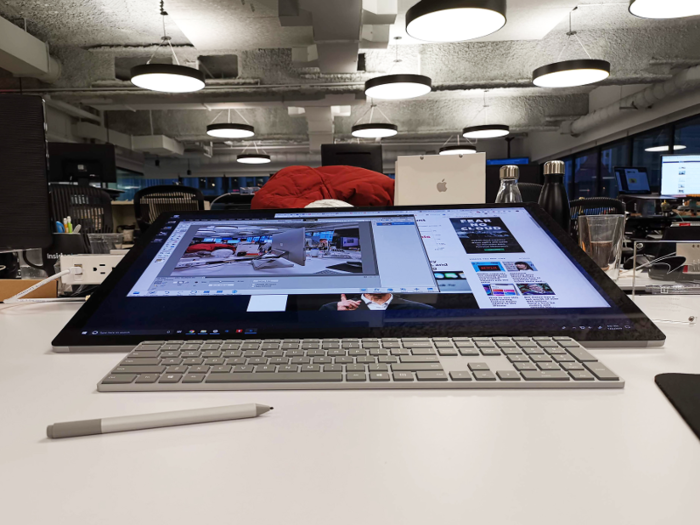
If you ever wished you could swivel a display to become more flat so you can draw, sketch, outline, write, sign, or annotate a document, then you might find value in the Surface Studio 2. There aren't many monitors out there — if any — you can buy separately that can do what the Surface Studio 2 can.
The thing is, the Surface Studio 2 is priced too high for experimentation. If you're a prospective Surface Studio 2 user who thinks you might like to have the swiveling display and the Microsoft Pen, are you really going to shell out $3,500 minimum to try it out? I suppose you could always return it if you don't think you're getting your money's worth which ... seems like a hassle.
A cheaper way to find out whether you'd be a born-again Microsoft Pen user is to try it out on Microsoft's other computers, like the Surface Pro 6 or Surface Laptop 2.
For all intents and purposes, I want to keep using the Surface Studio 2 for as long as Microsoft will let me before I need to return it.

Essentially, the Surface Studio 2 is a niche device. It doesn't quite have the right specs or price tags for most types of computer users out there, which is a shame because it has a gorgeous design that would look great at homes and offices. And its swiveling design and included Microsoft Pen could actually be useful for little things like signing a PDF document or sketching a circle on a photo to point something out.
But you don't need to be a power-hungry professional to want to do those "little things." The Surface Studio 2 with a Core i5 or maybe even a Core i3, 8 GB of RAM, and no graphics chip would be the perfect — and significantly less expensive — home or office computer. Then again, there are already several inexpensive and decently powerful all-in-ones from other companies, like Dell and HP.
I've thoroughly enjoyed using the Surface Studio 2, but that's because I'm using is a review unit that I didn't pay for.
If I was on the market for a new computer, however, the Surface Studio 2 wouldn't be on the list.
Popular Right Now
Popular Keywords
Advertisement